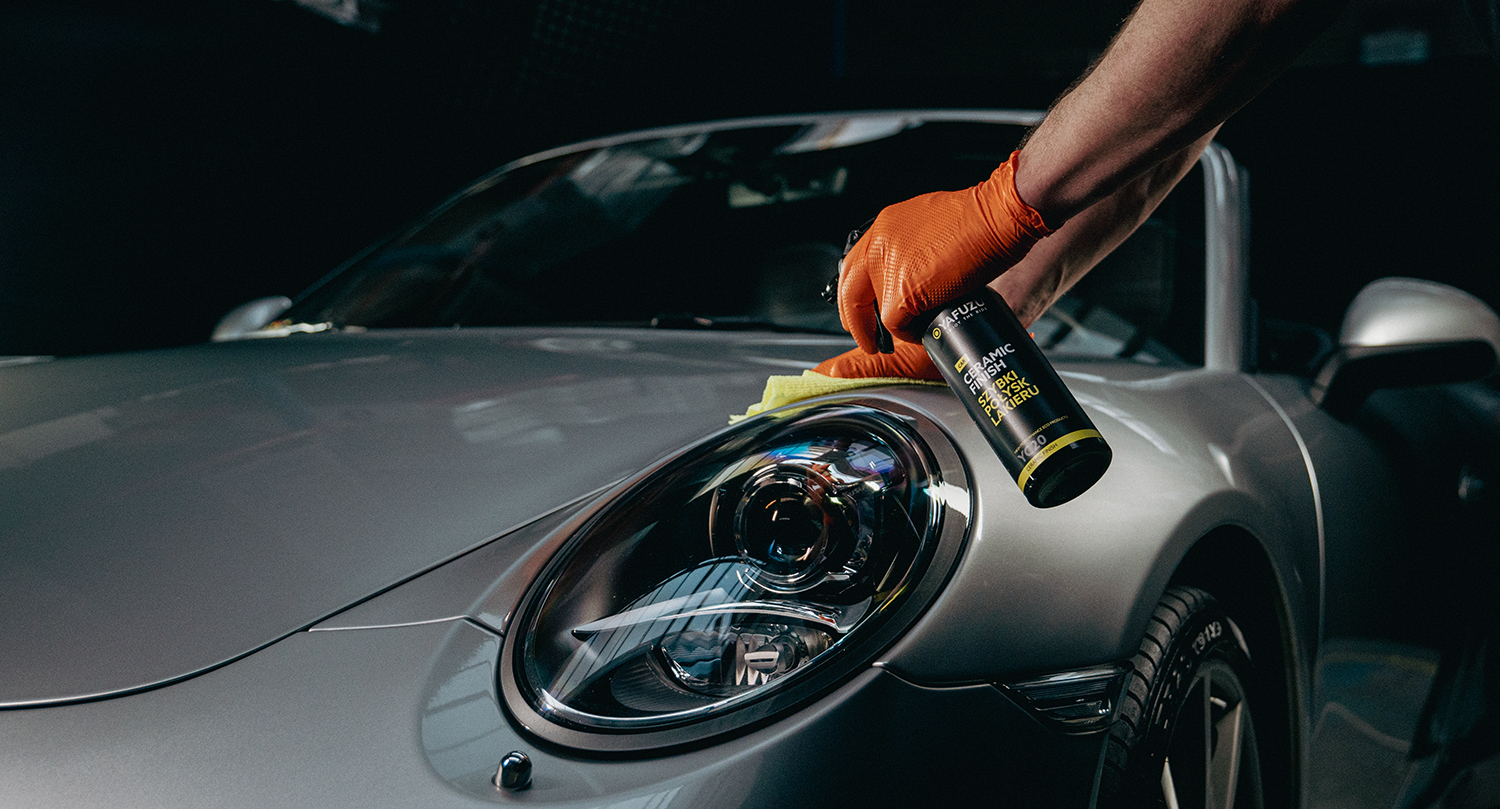CAR

COMPREHENSIVE GUIDE TO DETAILED CAR CLEANING
THE DIFFERENCE BETWEEN CAR WASHING AND CAR DETAILING
When it comes to maintaining the cleanliness of a car, there is a significant difference between a simple car wash and thorough car detailing. Car washing involves basic cleaning of external and internal parts, while car detailing takes the cleaning process to a whole new level.
Car detailing goes beyond quick rinsing and scrubbing. It involves a methodical and systematic approach to cleaning, restoring, and protecting your vehicle. Detailing not only enhances the appearance of your car but also helps preserve its value over time.
On the other hand, car washing is a more superficial process that primarily focuses on removing dirt and grime from the surface. It typically involves a quick wash using soap and water, followed by rinsing and drying. While car washing is essential for regular maintenance, it doesn’t address the finer details that car detailing does.
WHY CAR DETAILING IS IMPORTANT?
Car detailing is not just about aesthetics; it’s an essential part of car maintenance. Regular detailing helps protect the vehicle from environmental factors, prevent damage, and maintain its value. Here are a few reasons why car detailing is important:
- Preserving the paint: Over time, your car’s paint may become dull and fade due to exposure to the sun, pollutants, and contaminants. Detailing involves processes such as paint correction, polishing, and waxing, which can restore the shine and protect the paint from further damage.
- Removing scratches and swirl marks: Detailing can help eliminate minor scratches, swirl marks, and other imperfections in the paint. By using specialized techniques and products, detailers can restore the smoothness and clarity of the paint surface.
- Enhancing the interior: Car detailing also focuses on the interior of the vehicle. It involves thorough cleaning of seats, carpets, dashboard, and other surfaces to remove dirt, stains, and odors. Detailing can breathe new life into your car’s interior, making it a more comfortable and enjoyable place.
- Protecting resale value: A well-maintained and meticulously cleaned car retains its value better than one that has been neglected. Regular detailing helps prevent wear and tear, ensuring that your car looks its best when it’s time for resale or trade-in.
ESSENTIAL TOOLS AND MATERIALS FOR DETAILED CAR CLEANING
To achieve professional results, you need the right tools and materials. Here are a few essential items you should have in your arsenal for detailed car cleaning:
- High-quality microfiber towels: These are essential for various detailing tasks such as drying, polishing, and applying products. Microfiber towels are gentle on surfaces and help minimize the risk of scratching.
- Quality cleaning products: Invest in high-quality car shampoos, wheel cleaners, glass cleaners, and interior cleaners. Using the right products will ensure effective cleaning without damaging surfaces.
- Brushes and detailing tools: Various brushes and tools are needed for cleaning hard-to-reach areas such as air vents, crevices, and delicate surfaces. Having a variety of brushes and detailing tools will make the cleaning process more efficient.
With these essential tools and materials, you’ll be well-equipped to tackle any detailing task and achieve professional results.
STEP-BY-STEP GUIDE TO EXTERIOR CAR DETAILING
of exterior car detailing. Following these steps will help you achieve a shiny and protected finish:
- Pre-wash: Start by rinsing the car to remove loose dirt and debris. Then use a high-quality car shampoo and wash mitt to gently clean the surface. Rinse thoroughly to ensure all soap is removed.
- Wheel and tire care: Clean the wheels and tires using a dedicated wheel cleaner and brushes. Remove brake dust, road grime, and other contaminants. Apply a tire shine to give them a glossy finish.
- Glass and finish: Clean glass surfaces using a glass cleaner and microfiber towels. For finishing, use a dedicated polish or wax to restore its color and shine. Be careful not to get any product on the paint.
Following this step-by-step guide will allow you to achieve showroom quality and protect the exterior of your car from future damage.
COMMON MISTAKES TO AVOID DURING CAR DETAILING
Even experienced detailers can make mistakes. Here are some typical pitfalls to avoid during the car detailing process:
- Using the wrong products: Using the wrong products can damage the paint, interior surfaces, and finishes. Always use products specifically designed for automotive use and follow the manufacturer’s instructions.
- Skipping the pre-wash: Skipping the pre-wash can lead to unnecessary scratches on the paint surface. It’s crucial to remove loose dirt and debris before washing to minimize the risk of scratching.
- Using dirty towels: Dirty towels can reintroduce contaminants back onto the surface and cause scratches. Always use clean microfiber towels and regularly change them during the detailing process.
- Working in direct sunlight: Working in direct sunlight can cause products to dry too quickly, making them difficult to remove. It can also lead to uneven application and results. Ideally, choose a shaded area or work early in the morning or late in the afternoon.
- Neglecting the interior: Don’t forget about the interior of your car. Neglecting the interior can lead to unpleasant odors, stains, and premature wear. Regularly clean and protect interior surfaces to maintain their appearance and durability.
By avoiding these common mistakes, you’ll be able to achieve better results and extend the lifespan of your car’s surfaces.
STEP-BY-STEP GUIDE TO CAR INTERIOR DETAILING
Your car’s interior deserves as much attention as the exterior. Here’s a step-by-step guide to car interior detailing:
- Vacuuming: Start by thoroughly vacuuming the interior, including seats, carpets, floor mats, and the trunk. Use various attachments to reach into crevices and remove dirt and debris.
- Surface cleaning: Clean the dashboard, door panels, center console, and other surfaces using a dedicated interior cleaner. Spray the cleaning solution onto a microfiber towel and gently wipe the surfaces. Pay attention to buttons, knobs, and air vents.
- Seat cleaning: Clean fabric seats using upholstery cleaner and a soft brush. For leather seats, use a dedicated leather cleaner and conditioner. Follow the manufacturer’s instructions and ensure that the products are compatible with the material of your seats.
- Carpet and floor mat cleaning: Remove floor mats and clean them separately. Use carpet cleaner and a brush to remove stains and dirt from carpets. Allow them to dry before putting them back in the car.
- Window cleaning: Clean the interior glass surfaces using glass cleaner and microfiber towels. Ensure that no streaks or spots are left behind.
By following this step-by-step guide, you’ll be able to maintain a clean, fresh, and enjoyable interior for your car.
TIPS FOR MAINTAINING A THOROUGHLY CLEANED CAR
Now that your car looks flawless, it’s important to maintain its appearance for as long as possible. Here are a few tips on how to keep a thoroughly cleaned car:
- Regular washing: Wash your car regularly to remove dirt, dust, and other contaminants. Use high-quality car shampoo, a soft wash mitt, and clean microfiber towels. Avoid using stiff brushes or abrasive cleaners that can scratch the paint.
- Quick detailing: For quick touch-ups between washes, use a quick detail spray and a microfiber towel. This will help remove light dust and fingerprints and enhance the paint’s shine.
- Interior maintenance: Vacuum the interior regularly and wipe down surfaces to remove dirt and dust. Clean up spills and stains immediately to prevent permanent damage.
- Avoid harsh conditions: Whenever possible, park your car in the shade or under a covered area to protect it from direct sunlight, tree sap, bird droppings, and other environmental hazards. Avoid driving on rough roads or in harsh weather conditions that can damage the paint.
By following these maintenance tips, you’ll be able to enjoy the benefits of a thoroughly cleaned car for a longer period of time.
BIKE

BRAKING EFFICIENCY
Brake pads that are glazed, hardened, dirty, or improperly adjusted are the main cause of most braking power loss issues. To maintain the cleanliness and freshness of the brake pad surface, use sandpaper or steel wool to remove any contaminants and hardened coating. Check if they are correctly adjusted. The pads should be angled so that their front half first contacts the rim by about 1/8 inch. Additionally, the pads should touch the center of the rim, never the tire, and not protrude beyond the rim. Overall, clean and inspect the brake pads monthly. They are inexpensive and relatively easy to replace, and new pads significantly improve braking. Regularly clean the rims or brake discs with YB17 Rapid Dry Cleaner bicycle degreaser, which extends the life of the pads.
BOTTOM BRACKET
Bottom brackets are assemblies of bearings and spindles on which the pedal crank arms rotate. Due to their low and central position, they are exposed to contamination. Many bottom brackets have sealed bearing assemblies, but it’s worth taking care of their external covers by wiping them clean with a rag. Avoid spraying the covers with water under pressure.
SQUEAKING BOTTOM BRACKETS
This annoying phenomenon can have various causes and requires special tools for repair, so it’s best to entrust it to a professional mechanic.
Note: Some bottom brackets have semi-sealed or unsealed bearing assemblies that should be cleaned, inspected, and lubricated approximately every 6 months. This work requires special tools; using a hammer or a pipe wrench can damage the bottom bracket, and their replacement is not cheap.
MAINTENANCE OF FRONT AND REAR HUBS
Lubricating brake and gear levers Brake and gear levers operate thanks to springs and pivots, which should be lubricated every 6 months.
LUBRICATING CABLES
Well-functioning cables are crucial for the optimal operation of braking and shifting systems. They can be lubricated in various ways, from disassembling them to injecting grease into the ends of the housings. The frequency of maintenance depends on riding conditions. Check and lubricate the cables, if necessary, every 4-6 rides. For quick maintenance, inject YB50 Multilube into the ends of the housings.
Note: When thorough cleaning and lubrication of the cables are necessary, entrust this to a qualified mechanic. If you lack experience, you may easily spend several hours readjusting.
LUBRICATING BRAKE AND GEAR LEVERS
Brake and gear levers operate thanks to springs and pivots, which should be lubricated every 6 months.
